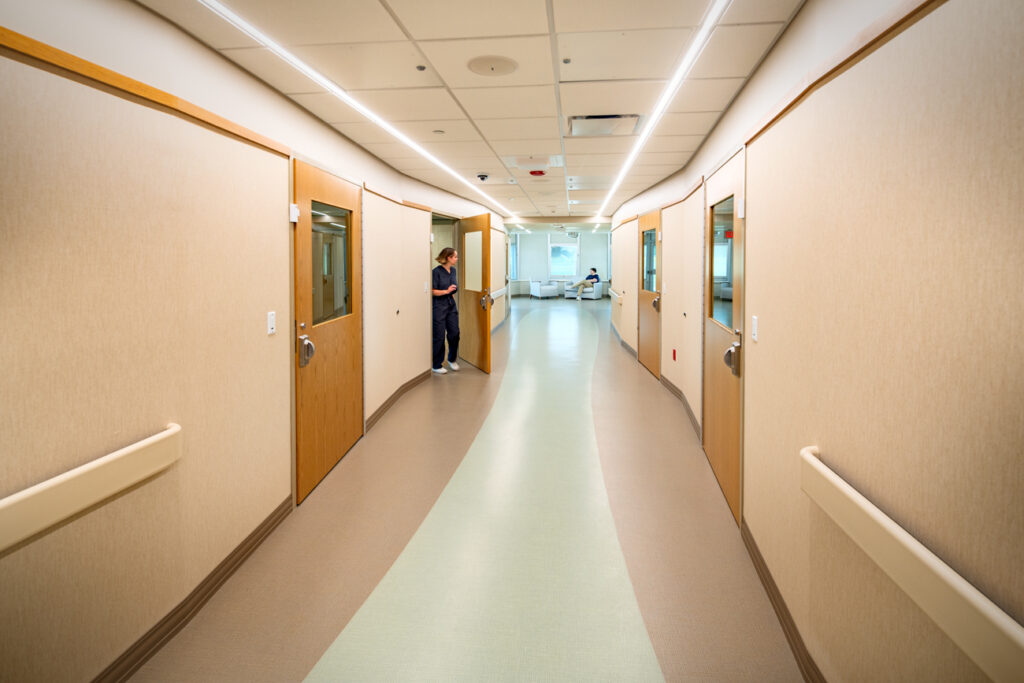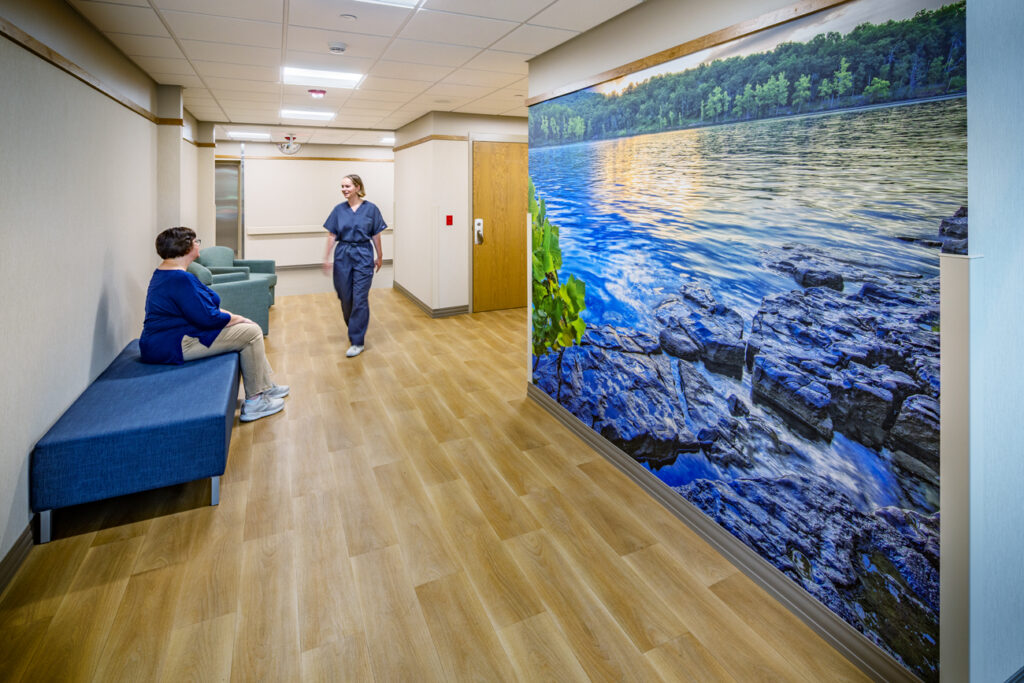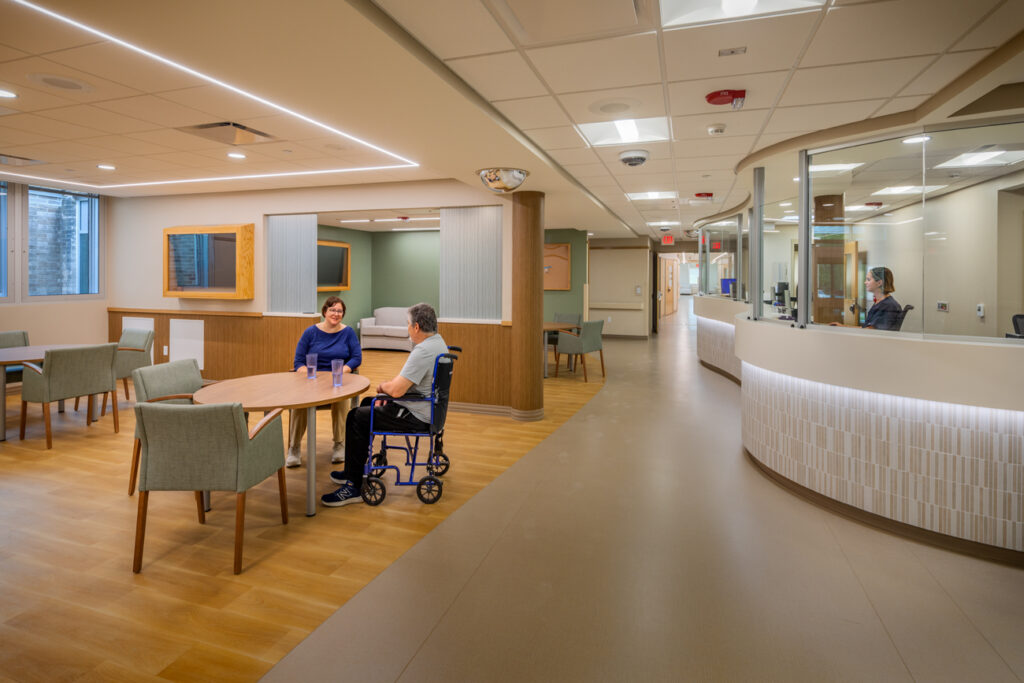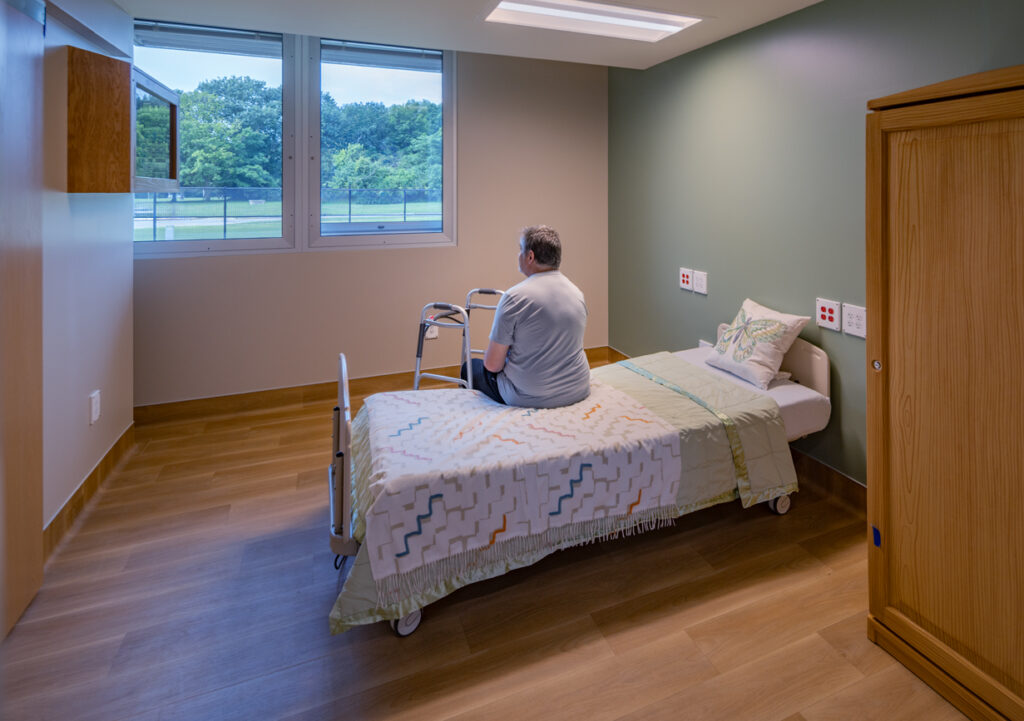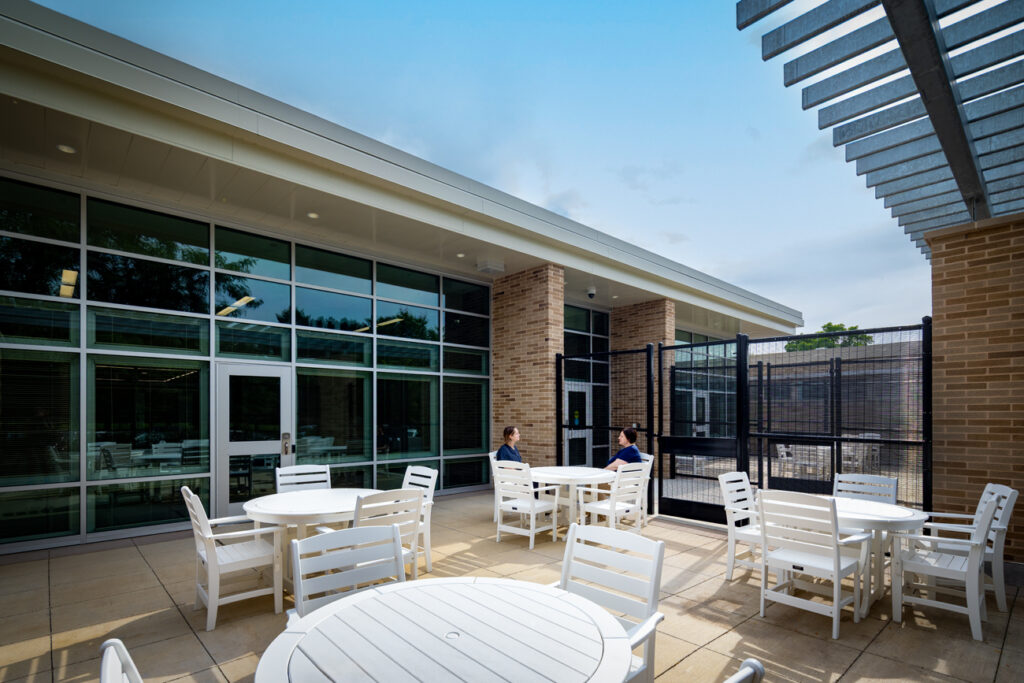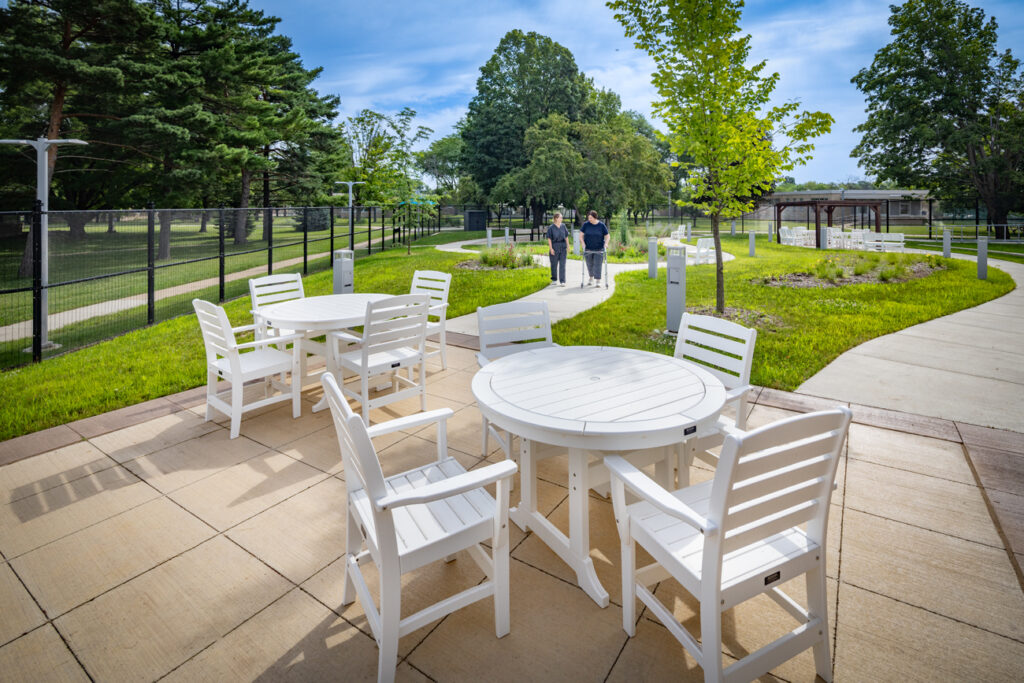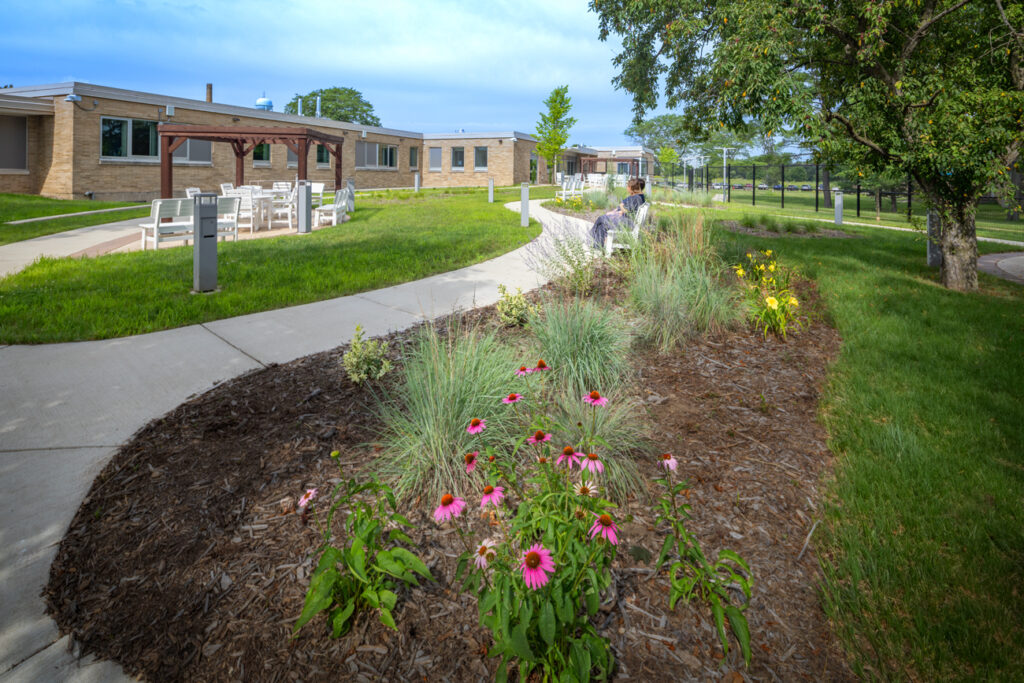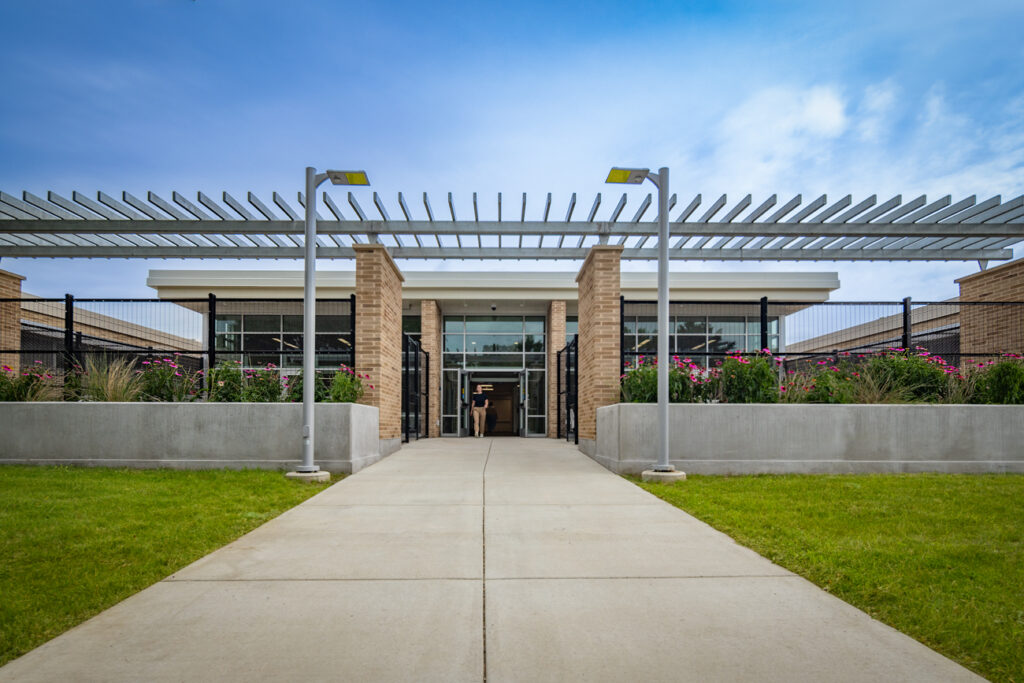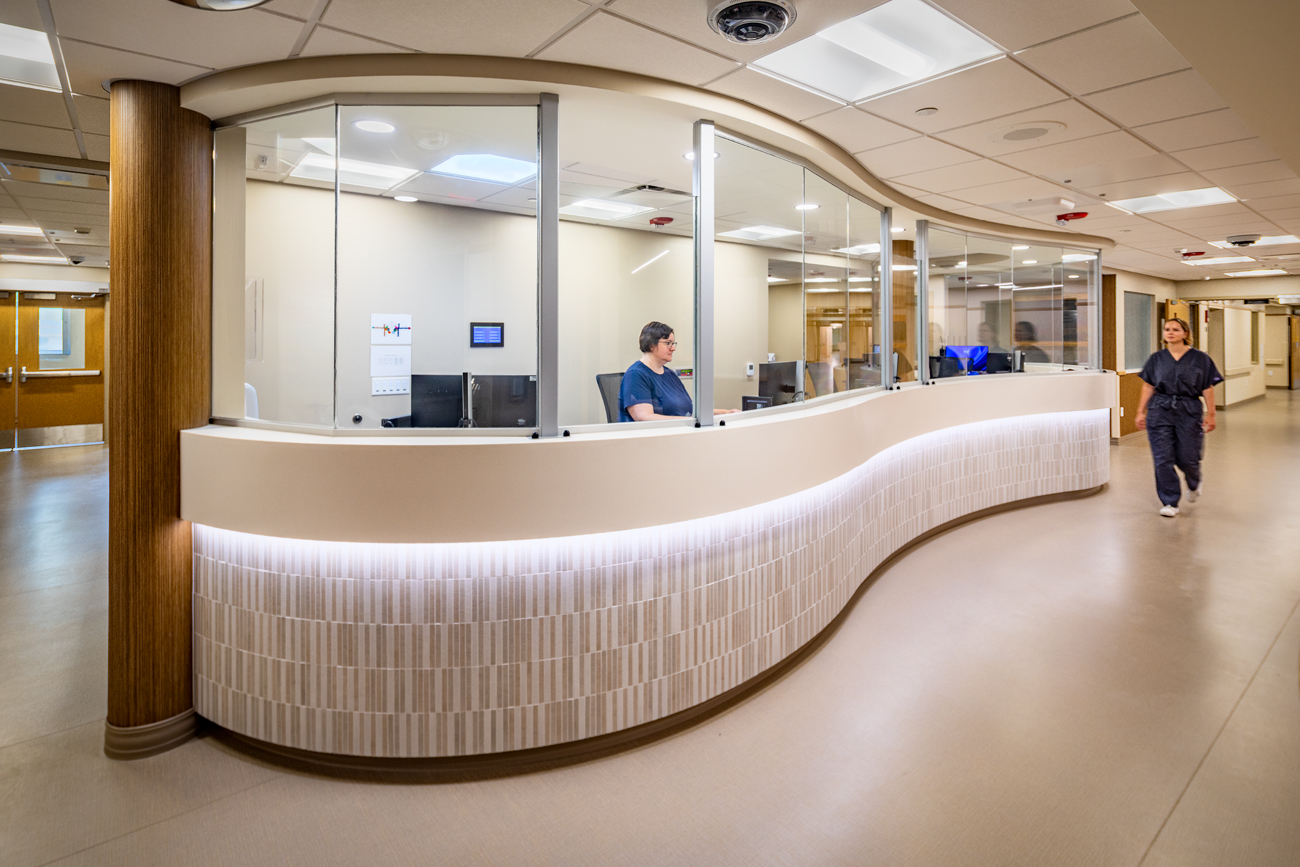This project involved the renovation of the 46,000 SF Building 6 on the Central Wisconsin Center (CWC) campus. The building now serves as a facility for either long or short-term care for CWC residents or for civil geriatric psychiatric patients previously cared for at Mendota Mental Health Institute (MMHI). This flexibility allows either institution to adapt to changing needs and patient volumes. The building functions as an inpatient behavioral health hospital and provides two (15) bed patient units, each equipped with a nurse station, activity spaces, dining room, and support spaces. The first floor is classified as an I-2 occupancy, while the lower level is a business occupancy, housing staff and building support spaces. Additionally, an outdoor enclosed courtyard has been developed for patient use.
Providing a supportive, safe work environment for the staff was a primary goal of this project. The design prioritized the creation of on-stage and off-stage spaces for staff. The curved walls lining the corridor are both practical for staff and experiential for patients. They place staff front and center, improving the visibility of patients in common spaces and eliminating blind corners. This design element is particularly beneficial for patients with dementia. The curve and loop of the corridor create a softer, more therapeutic atmosphere during daily walks, offering a flowing path that feels less rigid and confined.
Safety and dignity were top priorities in the design of restrooms. Recognizing that restrooms are among the most private spaces for patients in healthcare facilities, the design carefully addressed the higher risk factors for patients with behavioral and physical health issues. Restroom accessories, such as grab bars, were designed to be ligature resistant. Sliding doors were installed to prevent at-risk patients from locking themselves in.
The MMHI campus encourages family and friends to visit. To support this, an addition to the south side of the building offers comfortable indoor spaces for visiting, with access to the outdoors. An enclosed outdoor courtyard with a healing garden has been developed for outdoor visits. Like the interior walls, the garden features a curved, infinite looping path for patients to walk around. Wheelchair-accessible, raised planter beds allow patients to experience gardening as a form of therapy.
The geriatric patient population includes individuals transferred from other facilities due to aggression and other behavioral issues, making physical safety for patients, staff, and visitors a top priority. Zimmerman guided the owner in selecting architectural products and interior finish materials to reduce ligature risks. Furniture was carefully chosen to ensure it could not be weaponized against staff or patients. Additionally, the on-stage nurse stations provide clear views of the activity and dining spaces, enabling staff to observe patients effectively. Recognizing the high-stress environment and the toll this work can take on staff, off-stage spaces were included to provide much-needed areas for breaks.
